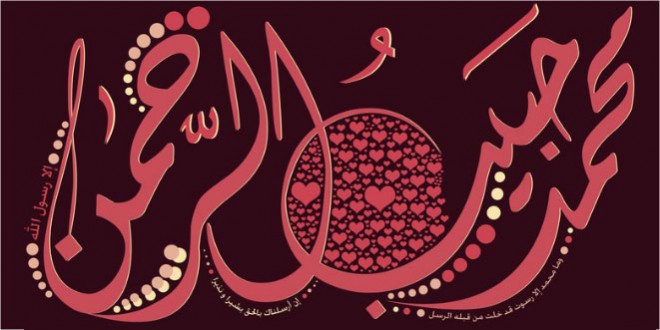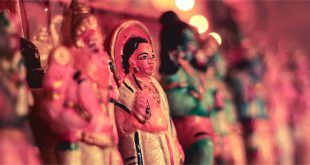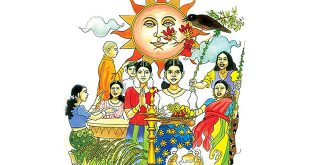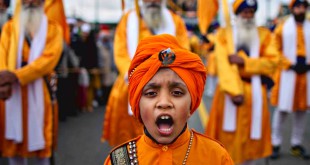Allahuma salli ala Muhammadin wa – ala – Ale Muhammad
O God! Shower thy blessings on Muhammad and the descendants of Muhammad
Eid-e-Milad-Un-Nabi is here and its time to celebrate. It is time to remember the teachings of the Prophet and follow the mission the Prophet dedicated all his life to.
Eid-e-Milad-Un-Nabi is celebrated in the memory of Prophet Muhammad. The Holy Prophet was born on the twelfth day of Rabi-ul-Awwal in 570 C.E Saudi Arabia, Mecca. Rabi-ul-Awwal is the third month of the Muslim year. Eid-e-Milad is both, a time to rejoice and a time to mourn, since the Prophet passed away on the same day.
The tradition of celebrating the Holy Prophet’s birthday on a large scale began in Egypt by the Prophet’s descendants, through his daughter Fatima. It was celebrated mainly by religious scholars and religious establishments. They gathered to hear sermons, distributed sweets, alms and particularly honey, the Prophet’s favorite.
Eid-e-Milad-Un-Nabi / Maulid
Eid-e-Milad is also called Maulid, since it is Prophet Muhammad’s Eid and the song sung in praise of the Prophet’s birth is called a Maulud. From the Middle Ages, it was believed that, listening to the recitation of Maulud has not only worldly but heavenly rewards too.
Barah Wafat or Eid-e-Milad-Un-Nabi
This festival is also referred to as, ‘Barah Wafat’ which stands for the twelve days of sickness of the Prophet, before he passed away. The day is for both mourning and celebrating. The Sunni sect and the Shia sect have a different take on the ways of celebrating of this day.
Celebrations by Shia Muslims
Shia Muslims celebrate this day to remember that Prophet Muhammad chose Hazrat Ali as his successor at Gadhir-e-Khumm. This occasion symbolizes the Habillah (the chain of imamat or the next leader). Eid-e-Milad-Un-Nabi and Eid-al-Gadhir are two names for marking the same day, for two different reasons.
Eid-e-Milad or Eid-e-Milad-un-Nabi – This name is used to mark the Prophet’s birth and death anniversary.
Eid-al-Gadhir – This name is used to mark the handing over of the spiritual rein to Hazrat Ali at Gadhir-e-Khumm. (The route between Syria and Yemen)
On this day, believers gather to recite special prayers for thanksgiving to Allah for his favors and sending Prophet Muhammad to the world, with his message to guide the people. People attend lectures and recitations on the Life and Instructions of the Holy Prophet. Poetry or Naats are recited after prayers and sweets are distributed amongst the poor.
Shia Muslims also mourn on this day as it is also the day when the Holy Prophet passed away.
Bohra Muslims, a part of the Shia sect, too celebrate the twelve days of Rabi-ul-Awwal with prayers and by listening to recitals. Prayers are conducted in mosques for all twelve days. Many Bohras perform Zyarat (a form of prayer that is performed as a meeting with the one you are praying to).
Celebrations by Sunni Muslims
Prayers are held throughout the month. On the twelfth day of the month Muslims remember the Holy Prophet and his teachings. Mourning on this day is not practiced at all because according the Sunni Muslims believe that mourning for the dead beyond three days hurts the departed soul.
In India, people carry out processions chanting praises of the Holy Prophet and Imam Hazrat Ali. These processions are decorated with fruits, flowers or even scenes depicting religious sites, episodes and figures. The sweet dish ‘Kheer’ (sweet porridge made of rice) is prepared as a tradition in Muslim homes.
Whereas in Saudi Arabia prayers are held, sweets are prepared and the Prophet is remembered through his words.
The ‘Urs’ or ‘Sandal’
This ceremony, performed in some parts of India, is nothing but a procession. The Prophet’s symbolic representation is placed in a glass casket and carried out as a procession.
The symbolic footprints of the Holy Prophet engraved in stone, a representation of the buraq and the horse, which are believed to have ascended to the heaven with the Prophet, are kept near the footprints and anointed with sandal paste. The glass casket is elaborately decorated. Marsiyas and elegies are sung while the procession is carrying on. This ceremony is the ‘Urs’ or ‘Sandal’
The religion of Islam celebrates three different Eids, Eid-ul-Fitr (Ramzan Eid), Eid-ul-Zuha (Bakri Eid) and Eid-e-Milad (Prophet Muhammed’s Birthday). All these stand for different occasions. Muharram is the Islamic New Year, it is not a time for merry-making and celebration but a time to remember the sacrifices of the holy ones.
 Kids Portal For Parents India Kids Network
Kids Portal For Parents India Kids Network







